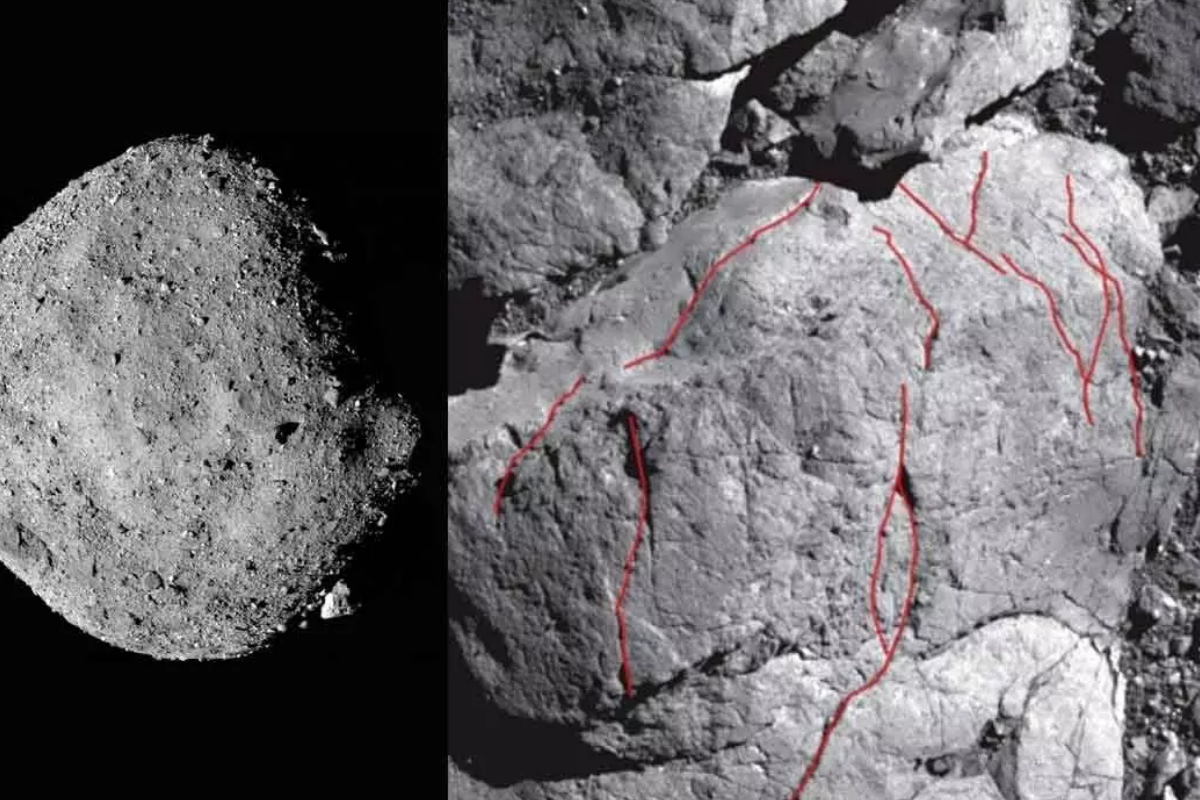- This shows that the surface of asteroids regenerates much faster than it does on Earth.
- OSIRIS-REx will return a Bennu sample in 2023.
- The Sun’s heat breaks up rocks on Bennu in just 10,000 to 100,000.
Scientists working on NASA’s OSIRIS-REx have found that the Sun’s heat breaks up rocks on Bennu in just 10,000 to 100,000 years. This shows that the surface of asteroids regenerates much faster than it does on Earth. For the findings, the team looked at high-resolution pictures taken by the spacecraft OSIRIS-REx of cracks in rocks on the asteroid Bennu (Origins, Spectral Interpretation, Resource Identification, Security-Regolith Explorer).
This information will help scientists predict how long it takes Bennu’s boulders to shatter into smaller particles that may erupt into space or linger on the asteroid’s surface. “We assumed surface renewal on asteroids required a few millions of years,” said Marco Delbo, a French physicist.
“We were surprised to learn that the ageing and weathering process on asteroids happens so quickly, geologically speaking,” Delbo said.
Rapid temperature variations on Bennu fracture and shatter boulders, like a cold glass in hot water. Bennu has 4.3-hour sunrises. At the equator, daytime highs may reach 127 C while nighttime lows drop to -23 C.
OSIRIS-REx images indicated rock cracks. Delbo said the fractures oriented in the same direction, indicating day-night temperature shocks. Delbo and his colleagues measured 1,500 OSIRIS-REx fractures by hand, some longer than a tennis court. The northwest-southeast fissures demonstrate that the Sun is reshaping Bennu. If rocks moved faster than they fractured, cracks would be random. Computer models and fracture measurements were used to calculate thermal fracture propagation and rock splitting times. Christophe Matonti of Université Cote d’Azur, CNRS, Observatoire de la Cote d’Azur, Geoazur, Sophia-Antipolis, Valbonne, France, said Bennu’s thermal fractures are similar to those on Earth and Mars. “It’s surprising that they can exist in’strange’ physical environments, even compared to Mars.” 2023: OSIRIS-REx returns a Bennu sample.
[embedpost slug=”james-webb-space-telescope-of-nasa-discovers-the-oldest-galaxy-ever-observed-in-the-cosmos/”]





















